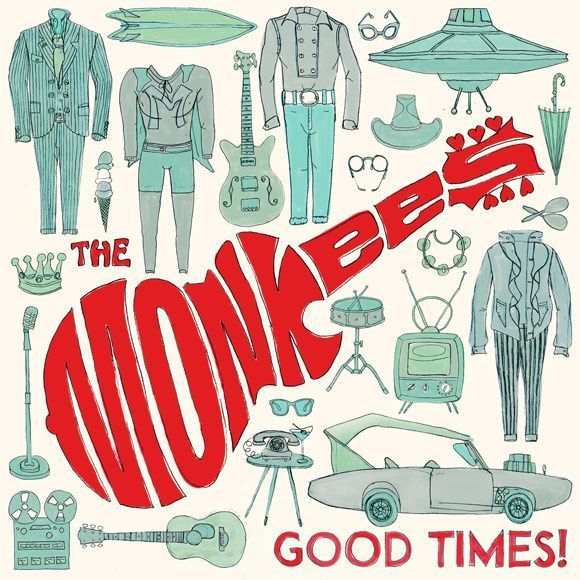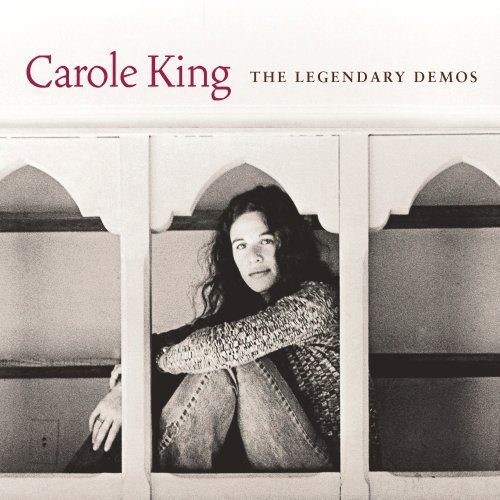
Rhino Records drops some new Monkees music on us as we wait for the release of their spruced up TV series BluRay Box Set. All 58 episodes of snarky lunacy that melded the Marx Brothers with pop culture of 1960’s West Coast America will appear in the midst of innumerable bonus features. Those extras include the group’s only feature film Head as well as the even more challenging final television special 33 1/3 Revolutions Per Monkee. The mega-set can be ordered at the Monkees’ official website only, and is limited to 10,000 copies world wide.
Tag: the wrecking crew
 Kent Hartman’s new book The Wrecking Crew: The Inside Story of Rock N Roll’s Best Kept Secret (Thomas Dunne Books/ St. Martin’s Press) is the multi-fold biography of a group of musicians who found themselves at the center of the perfect storm during the heyday of Top 40 Radio. This loose conglomeration of players became the go-to sessioneers for West Coast music producers during the 1960’s. Phil Spector, Brian Wilson, Lou Adler all counted on them for their accurate and intuitive skills during recording dates. We all know the music they helped create, but who they were is looked at in depth, between two covers, here for nearly the first time.
Kent Hartman’s new book The Wrecking Crew: The Inside Story of Rock N Roll’s Best Kept Secret (Thomas Dunne Books/ St. Martin’s Press) is the multi-fold biography of a group of musicians who found themselves at the center of the perfect storm during the heyday of Top 40 Radio. This loose conglomeration of players became the go-to sessioneers for West Coast music producers during the 1960’s. Phil Spector, Brian Wilson, Lou Adler all counted on them for their accurate and intuitive skills during recording dates. We all know the music they helped create, but who they were is looked at in depth, between two covers, here for nearly the first time.
During the course of this history you’ll meet Bassists Carol Kaye and Joe Osborn, drummer Hal Blaine, guitarist Tommy Tedesco, and many others. People whose names you don’t know but whose handiwork you have probably loved for 40 years. For instance, do the names Louie Shelton or P.F. Sloan ring a bell? It’s Shelton’s key guitar lick that drives The Monkees’ “Last Train To Clarksville,” while Sloan’s twelve string filigree adorns the intro of The “California Dreamin’” by the Mamas and Papas. Others, like guitarist Glen Campbell, will be familiar. As one of the few “crew” members to rise to individual fame his biography is a cohesive thread throughout the book.
Rather than delineate each player’s biography on a chapter by chapter basis or write the book as a series of interviews, Hartman intertwines their formative histories during the outset of the book. This makes for an interesting narrative as seemingly disparate occurrences coalesce to bring these folks together. A series of small serendipities and coincidences – we’d call it networking these days – ultimately converge in the recording studios of Los Angeles at just the right moment in time. We know what’s coming, but how it gets there – well that’s the entertaining part.
SkeletonPete Says…
As a “boomer”, a life long music collector, and a musician myself, I did not come to this book without prior knowledge of many the players and some of the stories. From the Wrecking Crew’s origins at Spector’s Gold Star Studio sessions, through Don Peake’s tenure as the only white player in the Ray Charles Orchestra and drummer Jim Gordon’s sad homicidal breakdown, Hartman affords a timeline and a series of vignettes that make sense of the often incongruous pieces. His new interviews with key players add fresh information and clarification of some of the previous apocrypha. Highly recommended, The Wrecking Crew is a brisk read, filled with informational and inspirational anecdotes. Along with Always Magic In the Air, Ken Emerson’s Brill Building overview, it’s a book I’ll keep within quick reach as a reference.

Embryonic Journey…
Demos offer a glimpse at a song’s embryonic state and insight into the writer’s initial intent. It’s always interesting the hear how a songwriter interprets their own works when definitive versions have been rendered by others and are ingrained in the public mind. The author’s version usually pales in the shadow of the hit but King’s demos reveal that her distinct phrasings and pronunciations were often copied directly as if learned phonetically. There is a lot more “Carole” in the hit versions than one would have imagined. Her vocal arranging skills, honed from her high school days, are well represented in even her earliest tapes. Background and response vocals were for the most part copied verbatim by the recording artists and producers. While you’d would be hard pressed not to prefer Aretha Franklin’s (“You Make Me Feel Like) A Natural Woman” you’ll also be surprised to hear how closely the feel of the demo is followed.
Stripped to basics, tunes like “Take Good Care of My Baby” point out the melodic nuances and rhythmic patterns King delineated in her piano work. It’s enlightening to examine how arrangers took many of those simple cues and turned them into lush string or horn counterpoints. Alternately you can hear how efficiently King could pitch a tune by approximating the style of established artists. Her harmonies on what became The Everly Brothers hit “Crying In the Rain” highlight that ability.
You Win Some, You Lose Some…
A perfect example of how demoes could be surpassed or lost in the translation is heard on the first two tracks. While Carole’s “Pleasant Valley Sunday” offers a lyrically sophisticated rumination on the quirks of 1960’s suburbia it lacks the signature guitar lick we’ve all come to associate with the tune. The Monkees version, produced by Chip Douglas (also the tune’s bassist) introduced Mike Nesmith’s fuel injected riff (based on George Harrison’s “I Want To Tell You”) and set it on a trajectory for the top of the charts.
On the other hand The Monkees reading of “So Goes Love” as recorded for their eponymous first album, but left unreleased until the first Missing Links compendium, totally misses the mark. King’s demo reveals it as “one that got away”. Had it been completed more closely to her demonstration tape – especially the complex background harmonies – it could have easily been a chart topper.
Ladies (and Gentlemen) of the Canyon…
Eventually Carole King left her Brill Building roots and along with Joni Mitchell, Jackie DeShannon, James Taylor and CSNY helped to usher in the Laurel Canyon singer/songwriter model that became a staple of 70’s FM rock. Her album Tapestry, sold millions of copies and made her a star in her own right. Quite honestly the demos for songs King made famous herself are less exciting to hear because they feel less revelatory.
SkeletonPete Says…
It’s an exceptional treat to have these sometimes bootlegged recordings available in excellent condition to explore. They are as enjoyable to hear as they are historically valuable. What’s missing for me? I would have loved the inclusion of two gems from The Monkees soundtrack to Head, “Porpoise Song” and “As We Go Along.” With her memoir topping the New York Times best seller list and interest renewed in the author’s back catalog I’m hoping a second helping of legendary demos will be in the offing soon.